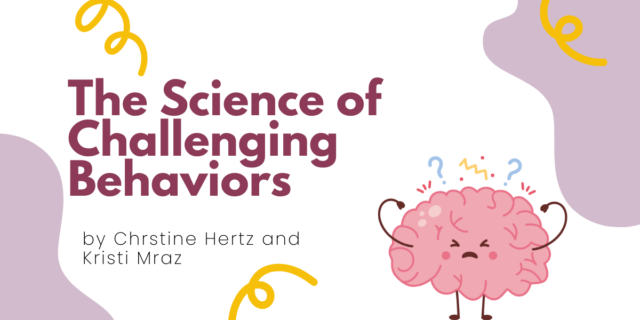
When Kristi Mraz was getting ready to enter the teaching profession, she couldn’t wait for the first day to arrive. For her, it was a chance to leave a mark, to impact the lives of children in positive ways, a grassroots, ground floor opportunity to make the world better tomorrow than it is today. She envisioned writing letters to the local government, litter and recycling lessons in the nearby park, and an empowered group of children who would stop at nothing to make positive change. Cut to her first year in the classroom: passion and good intentions only go so far when confronted with the day-to-day intricacies of teaching. Chaos reigned in her classroom.
Overwhelmed, overworked, and feeling incapable of translating big dreams into classroom practice, Kristi decided to try a behavior system commonly called a “clip chart.” This chart, made colorful and pleasing to the eye, had all the children’s names clothes pinned to the top. If a child “misbehaved,” his name was moved down (and down and down). Perhaps with behavior in order, her class could take on the projects that would save the world. At first, it seemed to work! The chaos dulled to a simmer and there was hope she might be able to take on the projects she had envisioned.
Then one day, something happened in her classroom that quickly shed light on the real truth underlying everything she thought was going so right.
Hear Kristi tell the story in her own words:
As she drove home that night, Kristi recognized the nagging feeling (that you might recognize as well) she’d had all along that the crestfallen look on a child’s face as she moved her clip down in plain view of her classmates couldn’t be what building a classroom community was all about. It had seemed to work, but work for whom? Whose life did it make better? Yes, it was calmer, but why? Not because she had taught great lessons of respect and community skills, but because, all glossing over aside, she publicly embarrassed kids who acted out of step. What if they didn’t even know what boundaries they’d overstepped? Could there be another way? Right then she decided: it wasn’t projects that would change the world, it was teaching how to be an engaged and responsible member of a community. Hence, a decades long inquiry project was born into the question:
How do we create a cohesive and nurturing classroom community, filled with kind, empathic, engaged citizens?
•••
Learn more about Kids First From Day One at Heinemann.com

Christine Hertz is coauthor of the Heinemann titles Kids First from Day One and A Mindset for Learning. She finds great joy and challenge in helping all children grow as independent and engaged students. She is passionate about keeping play and creativity at the center of children's lives and curiosity and wonder at the heart of learning. Christine has taught in a wide variety of classrooms from preschool to fourth grade and as an adjunct instructor of education courses. She currently teaches in Worcester, Vermont. You can follow her on Twitter @christine_hertz or visit her web site at christinehertz.com
Kristine Mraz is coauthor—with Christine Hertz—of the new Kids First from Day One, which provides a practical blueprint for increasing the child-centeredness of your teaching practice. She and Christine previously teamed up for the bestselling A Mindset for Learning (coauthored with Christine Hertz), which provides practical and powerful strategies for cultivating optimism, flexibility, and empathy alongside traditional academic skills. Kristi teaches Kindergarten in the New York City Public schools. In addition to writing and teaching, she consults in schools across the country and as far away as Taiwan. She primarily supports teachers in early literacy, play, and inquiry based learning. You can follow all of her adventures on twitter @MrazKristine or on her blog kinderconfidential.wordpress.com



